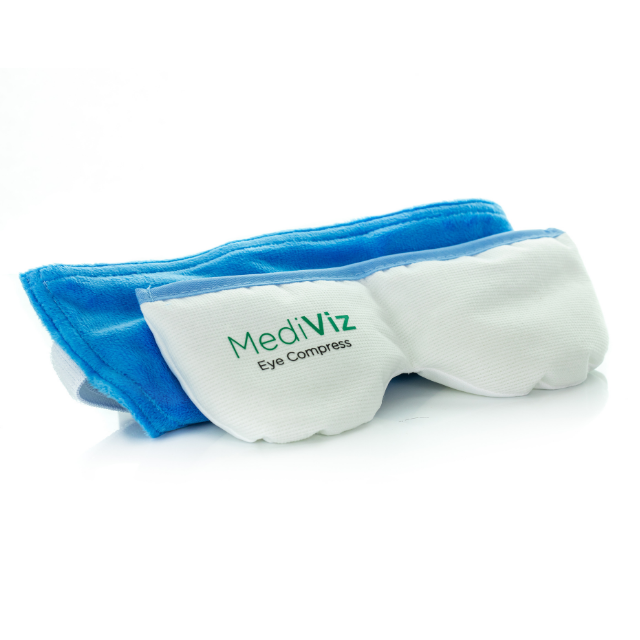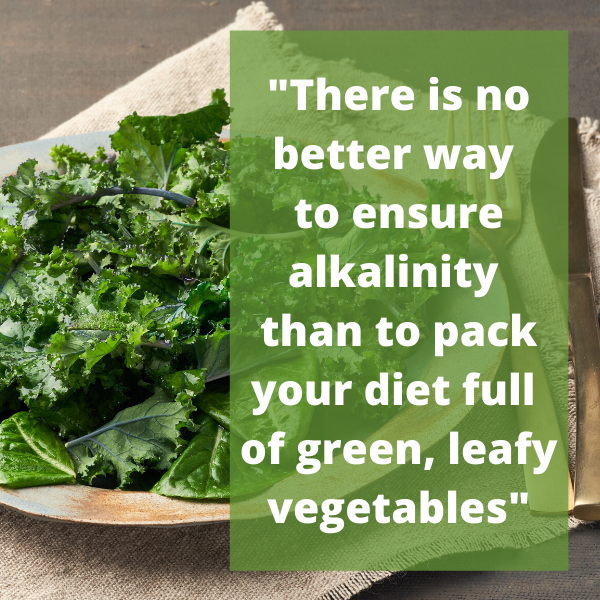What is Meibomian Gland Dysfunction? How to Heal Through Food
For those with meibomian gland issues, discovering ways to improve the glands is an important step in decreasing inflammation and feeling better overall. Meibomian Gland Dysfunction is often a progressive, obstructive issue affecting the glands of the eyelids, which advances from the production of normal, healthy oil into stagnant, hardened oil that can lead to gland atrophy. Typical treatments for this condition are very important, but it’s also critical that you understand why alternative treatments may be beneficial as well.
As with any eye condition, it's important to see your optometrist or ophthalmologist for a thorough ocular evaluation. By doing so, you can gain a proper diagnosis and treatment plan for your particular condition.
What are Meibomian Glands?
Our tears are composed of three layers; a mucus or mucin layer, an aqueous or watery layer, and an oily layer. The meibomian glands are responsible for producing the oil for that oily layer, and this layer of the tear film is so critical because it lubricates the eyes and prevents evaporation of the rest of the tear film. In turn, this keeps you comfortable and ensures that your vision is clear and stable.
Without meibomian glands that work properly, you may experience any of the following symptoms:
- Irritated eyes
- Burning
- Redness of the eyes and eyelid margins
- Watery eyes
- Intermittent blurred vision or fluctuating vision
- The feeling that something is in your eyes
- Painful eyelid bumps
- Swollen eyelids
While there are many other symptoms you may experience, these are the most common. Often, the oil within the glands becomes hardened and eventually stagnant. This means that your eyes will not be lubricated by free-flowing oil, and it also means that the oil your glands are producing is not optimal. Optimal meibum (the oil produced from these glands) is the consistency of olive oil, while many people are experiencing meibum with the consistency of toothpaste. This isn’t good!
If you can first ensure that your body is producing a high quality oil, you can then make sure that oil is flowing properly. In a bit, we’ll cover a few of the ways you can help your body produce better oil as well as ways you can avoid stagnation of these precious glands.
How to Support Eyelid Health and Get Rid of MGD
Use a Warm Compress
When you have stagnant oil in your meibomian glands, it’s likely that the oil is of unhealthy quality and hardened. To get your oils moving again, use warm compresses for maintenance. Think of it like this: butter is hardened until you melt it, after which it becomes free-flowing. The oil in the glands of your eyelids is similar, and remember that we want oil the consistency of olive oil.
Simply use your warm compress one or two times daily. Heat up your mask in the microwave for 20 seconds, and then apply it to your closed eyelids for 10-20 minutes. You may have to reheat once to get to a full 20 minutes. We love the MediViz Warm Compress with Removable Cover because it's super easy to clean!
Perform Meibomian Gland Expression
After you’ve heated the oil in your glands, you’ll want to release it onto your eyes. This is a simple process and it should not be painful at all. Using your clean finger or a Qtip, look in the mirror and begin on one side of your eyelid. Gently roll your finger or Qtip down and along the entire eyelid, first working on the upper eyelids and then the lower. For the lower lids, it’s best to close your eyes. Also, if this seems too difficult, you can simply close your eyes gently and massage over the eyelids.
Eyelid Hygiene
To effectively cleanse your eyelids, we recommend washing your face with a tea tree face wash followed by the use of hypochlorous acid used twice daily. Simply spray the solution onto a cotton ball or round, apply to your eyelids, and let it dry.
If you're into eyelid wipes, which we love, we recommend checking out the MediViz Tea Tree Eyelid Wipes for a bit of extra friction while cleaning your eyelids and lashes.
Omega-3 Fatty Acids
Adding additional omega-3 into your diet can benefit many things, and your eyes are one of those things. By putting healthy oils into your body (as opposed to unhealthy oils from trans fats and processed food), you’re allowing your body to better produce the healthy oil needed for your tear film.
9 Foods To Add to Your Diet
The foods listed below are just a few of the many healthy foods you should be consuming for overall eye health. We highly recommend purchasing organic as much as possible, because pesticides and fertilizers added to crops can derail what you’re trying to accomplish (more on that later). If you can’t always manage organic, it’s alright, but try to choose organic as much as your grocery store availability and budget will allow.
Leafy Green Vegetables
An alkaline body is a healthy body, and there is no better way to ensure alkalinity than to pack your diet full of green, leafy vegetables. Spinach, kale, chard, arugula, collards, mustard greens, beet greens, and others are packed with vitamins, nutrients, and antioxidants needed for healthy eyes. Adding these into your diet is easy - we recommend replacing your breakfast with a green smoothie filled with these healthy veggies. All you need to make a simple green smoothie is a plant-based milk, any of the greens mentioned above (we recommend spinach if you’re new to this), berries, and avocado. Once you’ve started here, you can begin to incorporate other great additions, some of which are mentioned below.
Avocado
This fruit is full of high quality monounsaturated fat your body needs. Eating avocados daily will benefit your hair, skin, eyes, and heart, among other things, and it’s a great way to add healthy fats into your diet. When you’re full from eating healthy fats, you also won’t have room for the unhealthy fats! Enjoy avocados in guacamole, as a snack sprinkled with sea salt, or throw some into your morning smoothie (which is our preferred method of enjoying it!)
Ground Flaxseed or Flaxseed Oil
Flaxseed is such a great source of omega-3 fatty acids, and you already know these are important for your eye health and the health of your meibomian glands. While the omega-3 component of flaxseed, alpha-linolenic acid (ALA), must be converted before use in your body, it’s still a great way to up your omega-3 intake. Sprinkle some onto a salad, into soups, or add it to your green smoothie in the morning.
Broccoli
This is quite possibly my favorite vegetable. Broccoli is packed full of antioxidants and is a great alkalizer. It also contains tons of vitamin C and K, folate, potassium, and fiber which can help decrease free radicals in your body and fight inflammation. Broccoli is great by itself or with a plant-based bean dip as a snack, in salads, soups, or roasted in the oven.
Sweet Potatoes
This delectable potato variety is full of beta-carotene, a derivative of vitamin A. We know this vitamin is healthy for the eyes and essential for vision. Enjoy sweet potatoes roasted, baked, or even throw them into a smoothie. Avoid sweet potato pie and other dishes that make this powerhouse veggie harmful!
Olive Oil
A staple in the mediterranean diet, olive oil contains powerful antioxidants and is full of monounsaturated fats your body needs. Use olive oil to make your own salad dressings, drizzle it over roasted veggies, or even blend it into your morning coffee (trust me, it’s great!).
Turmeric
Turmeric is a potent anti-inflammatory, and this is what makes it so beneficial for the eyes. Although no studies have been done on this powerful spice and dryness of the eyes, there is abundant evidence of its benefits for the body as a whole. Use it in stir fry, put some into your green smoothie, or make a plant-based turmeric latte.
Lemon and Lime
We love lemon and lime because they’re both low sugar fruits that have alkalizing benefits. They’re also a great source of vitamin C, a powerful antioxidant. Use lemon or lime in your water in the morning, add some into your green smoothie, use them in homemade salad dressings, or sprinkle a bit over your roasted veggies.
Berries
Blueberries, strawberries, blackberries, and raspberries are so high in antioxidants that you can’t leave them out of your diet. They're a great way to have a little sweetness without eating a ton of sugar. Enjoy them in a green smoothie, in salads, or by themselves as a tasty dessert.
5 Foods to AVOID
Sugar
The rise of chronic disease including heart conditions, high blood sugar, and obesity all comes down to one major factor, and that’s the amount of sugar we’re now consuming. At the beginning of the 20th century, sugar consumption averaged between 17-20 pounds per person per year. Recently, that number has skyrocketed to over 120 pounds per person per year. While these numbers are staggering, much of the added sugar in your diet can be avoided.
Refined sugar, which includes high-fructose corn syrup, evaporated cane juice, dextrose, agave, maltose, and others can all cause fluctuations in blood sugar and eventually sugar crashes. This roller coaster can cause mood swings as well as cravings for more sweets, exacerbating a never-ending cycle.
We recommend avoiding sugar whenever possible, which means getting rid of the sugar in your coffee, avoiding sugar sweetened beverages like soda, fruit juice, and electrolyte drinks, avoiding cookies, pies, cakes, white bread, conventional salad dressing, most condiments, and so many other things. I know this can be tough at first, but there are many ways to satisfy that sugar craving naturally. Try a bowl of berries, a green smoothie, or at the very least, switch your sweetener to stevia or monk fruit if you need it for coffee or tea.
Conventionally Raised Meat
Conventionally raised meat is a source of extra hormones, bacteria, pollutants, antibiotics and other things that our bodies don’t need. Numerous studies have shown the detrimental effects that meat can have on our bodies, and it comes down to inflammation. 70% of foodborne illness in the US comes from contaminated meat - E.coli, listeria, and campylobacter are all culprits. Most likely, these animals are fed food that’s just not meant to be digested by them (grain vs grass), poop ends up splashing across their living space, and your meat ends up contaminated.
So, what are your options? Fish and eggs aren’t much better because they’re raised in a similar fashion. If you absolutely must have meat, choose organic, free-range, and as wild as possible, such as wild caught fish, pasture raised eggs, and grass fed beef. If you can avoid it or limit it, that’s even better. Consider having a meatless Monday or only enjoying meat on the weekends. After a few weeks, you may notice that you’re feeling better and enjoy life without it! We eat meat about once per month, sometimes more and sometimes less depending on the season, but we try to avoid it because we know how much better we feel when we avoid it altogether.
Dairy
This one is going to make a lot of people sad, but you need to give up dairy products. This includes milk, cheese, yogurt, sour cream, and other products like it. Similar to meat, dairy products can be filled with antibiotics, hormones, and substances that can increase inflammation in the body. Many people are also sensitive to dairy - it’s one of the top food sensitivities - and this can be problematic for people that have chronic inflammation.
Dairy is also one of our largest sources of sugar and saturated fat, so it needs to be avoided. There are many non-dairy options out there that are really great. Check out cashew yogurt, almond and cashew milk, and nutritional yeast for making non-dairy cheese sauce.
Processed Foods
This category includes all cakes, cookies, pies, most breads and baked goods, french fries, and really anything in a box or can. If it contains many ingredients you can’t pronounce, it’s likely not great for you. Partially hydrogenated oils, such as trans fats, lead to increased inflammation in the body. In addition to this, excitotoxins like MSG (monosodium glutamate), corn protein, gelatin, glutamate, yeast extract, and others are used for flavoring and can lead to a whole host of other issues. Do everything you can to avoid frozen meals, chips, crackers, canned soup, conventional sauces and dressings, candy, and soda. Your body will love you for it.
Pesticides and Fertilizers
For all of the above foods we’ve discussed, it’s so important to note that buying organic is a must. Whenever possible, look for this in your grocery store. Always search out and buy organic when it comes to the Dirty Dozen which includes strawberries, spinach, kale, nectarines, apples, peaches, grapes, celery, pears, cherries, tomatoes, potatoes, and peppers. Try to avoid these items if they’re not organic, or choose replacements for them.
The Clean Fifteen (produce that is best bought organic, but is also fine conventionally) includes avocado, sweet corn, onions, papayas, sweet peas, eggplant, asparagus, cauliflower, cantaloupe, broccoli, mushrooms, cabbage, honeydew melon, and kiwi. These lists change often, so make sure to check them out before heading to the store,
Top 3 Hygiene Tips for MGD
1. Use an Eyelid Wipe or Hypochlorous Acid
We recommend trying out the MediViz Tea Tree Eyelid Wipes for maximum cleaning potential. However, if you'd rather not use a wipe, the Heyedrate Lid and Lash Cleanser is a great way to keep those eyelids and eyelashes clean.
2. Relax with a Warm Compress Eye Mask
Using a warm compress, like the MediViz Mask with Cover, is an easy way to warm up the meibomian glands and ultimately allow them to release much-needed oil onto the front of your eyes. The mask we've linked even has a removable cover for easy cleaning.
3. Watch Your Diet
Really dig into the 9 foods to add and 5 foods to avoid that we've discussed above. By making a few small tweaks to your every day diet, you may find that your eyes are feeling better because of it.






